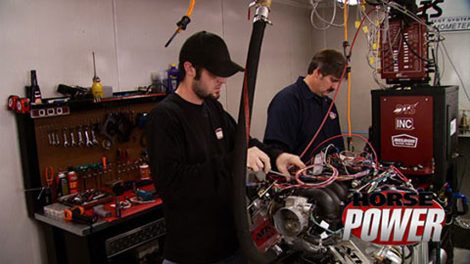HorsePower Builds
Want more content like this?
Join the PowerNation Email NewsletterParts Used In This Episode
ATK Performance Engines
LS1 long block engine.
Crane Cams
Dual valve spring assembly, titanium retainers, lower spring seats, machined steel locks, valve spring compressor tool for LS1.
Dynamic Test Systems / (DTS)
Dyno cell and equipment.
E3 Spark Plugs
E3 Diamond Fire spark plugs.
Edelbrock
Edelbrock RPM Xtreme LS cylinder heads, 90 mm throttle body, low profile air intake elbow, LS series valve covers, Victor series water pump, long tube headers.
Edelbrock
Plant tour.
KnKut Performance Drills
Performance drill bits.
Painless Performance
Perfect Engine Management Module for GM LS1 motors, upgraded high rpm module with higher rpm camshaft.
Shields Premier Windscreens
Front windshield, side windows and front quarter window.
Summit Racing
Crower hydraulic roller cam, Comp Cams roller lifters, Summit pushrods 7.90 length, Dart Pro 1 cylinder heads, Dart single plane intake, Summit 1.5 rocker arms.





























